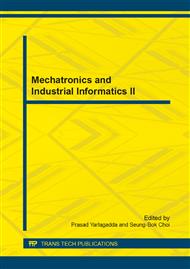p.766
p.773
p.782
p.788
p.794
p.799
p.803
p.807
p.811
Simulation on PAPR Suppression Algorithm for Multicarrier System
Abstract:
The main disadvantage of multicarrier system is the high peak-to-average power ratio which can easily result in significant cut-the-top distortion of power amplifier. However, the power efficiency of power amplifier will be reduced by power back-off technology. Therefore, crest factor reduction is important in reducing the peak-to-average power ratio of multicarrier system and improving the efficiency of power amplifier. The peak-to-average power ratio can be effectively reduced with small distortion by the algorithm of crest factor reduction based on peak cancellation. And the performance of peak-to-average power ratio is better with the same error vector magnitude.
Info:
Periodical:
Pages:
794-798
Citation:
Online since:
July 2014
Authors:
Keywords:
Price:
Сopyright:
© 2014 Trans Tech Publications Ltd. All Rights Reserved
Share:
Citation:


